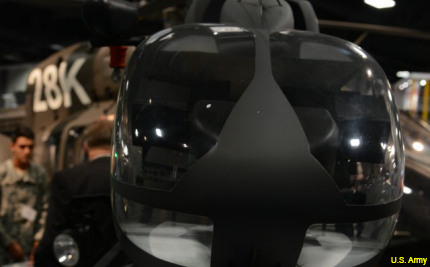Army taps supercomputing to speed development of new systems
With "physics modeling" the Army and the rest of DOD can do more rapid prototyping to keep up with emerging threats.

The Army displayed some new systems at the recent AUSA meeting in D.C.
The military has long been looking for ways to shorten its acquisition cycle in order to keep up with emerging threats. The traditional progression, which goes something along the lines of RFP/design/development/program of record/low-rate production/full-rate production can take a decade, which might not be the best way to answer the bell in a world where technology changes so quickly.
The Army is looking to speed up that process by using supercomputers to do “physics modeling” early in the design phase, in order to simulate real-world conditions and get the most precise possible specifications up front.
Dr. Jeffrey Holland, director of the Engineer Research and Development Center at the Army Corps of Engineers, who spoke about engineered resilient systems, at a recent conference in Virginia, said getting the best possible design at the start of the development process could lead to more rapid prototyping of systems, according to an Army release.
"You've gotten used to plug and play inside your automobile,” Holland said. “That doesn't exist in the realm of weapons systems we have today."
If the concept behind what Holland dubbed physics modeling sounds familiar, it’s because it would take the same kind of supercomputing approach to weapons systems that is already used in aerospace engineering or simulating nuclear tests. It would bring those kids of simulations to other systems, incorporating factors such as speed, weight, vibration, torque, temperature, humidity, wind, dust, and ballistics into the mix.
It’s an approach that’s fairly new for the Army. Holland said the Army was the last of the services to adopt the engineered resilient systems, or ERS, approach, but a few years ago tight budgets and the potential cost savings of ERS spurred a change. Since then, ERS has become a program of record and been applied to Army helicopters and vehicles, as well as other systems.
The key is taking advantage of DOD’s supercomputing resources, which are necessary to run the complex simulations. The Army has access to DOD's High-Performance Computing Modernization Program and the Defense Research and Engineering Network to test new systems—and, for that matter, recently added a new supercomputer, the 3.7 petaflop Excalibur (ranked as the 19th fastest in the world) to its arsenal.
For example, Dr. Marvin Moulton, lead aerospace engineer for the Research, Development and Engineering Command at Redstone Arsenal, Ala., has worked with ERDC on designing more efficient rotors for the CH-47 Chinook helicopter and is now using ERS data to evaluate the tail rotors on the AH-64 Apache and UH-60 Black Hawk helicopters. Next up is work on the Gray Eagle unmanned aerial system.
The challenge isn’t the simulations so much as giving the supercomputer the data to work with, Moulton said. Flight performance data in some cases wasn’t available or didn’t exist, to researchers had to round up subject matter experts. With that data collected and archived, the team is now making a lot of progress. Within two years, Holland said, "we've taken those big machines and increased the productivity of using those capabilities 10,000 times."
Holland said that the plan is to continue developing ERS and, by 2024, put all Defense Department weapons systems through ERS testing.



